
EconoWave 15Pro
Designer:
JoeR
Project Category:
Loudspeakers/Cabinets
Project Level:
Advanced
Project Time:
20+ Hours
Project Cost:
$500 – $1,000
Project Description:
It was time to refresh my mid-high PA cabinets. While researching the causes of listener fatigue, I found the Econowave blog at PE and Redstate audio, and the unique crossover design described there, which was modeled with the free “Windows Passive Crossover Designer”. If you have not experimented with WinPCD, consider downloading it and giving it a try! You will be able to quickly simulate many designs and see the results visually, without having to physically build them. This will save a great deal of time and money, and you can zero in on your optimum design much faster. There are two computer files required for each driver used, the .frd frequency file, and the .zma impedance file. There is also a place labeled “SPL adjust” to enter the difference in efficiency (8dB) between the woofer and compression driver. Be sure to do this or your curves will not match up properly.
The Econowave blog also discusses the importance of elimination of any unwanted reflections in the HF subsystem. This cabinet design uses a split baffle to move the horn forward and does not have any internal cabinet edges around the horn. The internal geometry of the horn itself also is a consideration. (The blog discusses horn geometry and in particular, horns with parallel internal walls in the throat area, and the detrimental internal reflection that could occur.)
Design Goals:
1. Great Sound (obviously) with minimal listener fatigue.
2. Water resistant design (brief summer shower should not ruin the woofer cones)
3. 100 dB efficiency with 300w-400w program power handling
4. Full-range response for smaller events, mid-high performance with subs for larger ones.
5. Medium throw capability (90 degree horizontal coverage now, 60 degree in future design)
6. Trapezoidal cabinet with vertically-aligned voice coils, and closely-spaced drivers
7. Reasonable weight around 60 lbs.
8. Readily available parts from Parts-Express naturally!
Driver Selection:
The weight requirement suggested a neo woofer, and I chose the Eminence Kappalite 3015 neo woofers #290-597 based on the specs and smooth response of this driver, and also my positive experience with the 3015LF version of the same woofer that I use in my subs. Eminence provided the .frd and .zma files for modeling the woofer in WinPCD. Woofer cone was given 2 light coats of “Wet Look” coating #340-512 using a very soft 1” paintbrush to provide water resistance.
For the HF driver, the B&C DE250 #294-605 got the nod. WOW- I CANNOT SAY ENOUGH GOOD THINGS ABOUT THIS DRIVER! This level of clarity and detail is astonishing in a compression driver. Another huge plus is that these drivers are essentially FLAT, and do not require equalization in the crossover, just level matching with the woofer. PE provided the .frd and .zma files for modeling the driver in winPCD.
The horn lens chosen was suggested in the Econowave blog, and is the B-52 PHRN-1014 #299-2303 and is an absolute bargain at PE. This is a simple, throatless 90×40 design with no parallel internal walls.
Enclosure Design:
Cabinets were constructed from plywood, with a trapezoid shape for horizontal arrays when needed, and the internal volume (2.8 cu.ft.) recommended by Eminence for their “medium” sized cabinet and tuned to 49hz. I used “Sandeply” plywood from Home Depot and while ¾” thick, is considerably lighter than poplar or other hardwood plywood. While it is relatively void-free, the internal layers only seem to have the density of balsa or basswood. Screw holding power is less, so be sure to use hurricane nuts #081-1082 or Tee nuts to mount your drivers. The plywood seems to be fairly non-resonant like MDF, but stronger and much lighter than MDF, but weaker and more flexible than poplar or pine plywood. (If strength is a major concern, then use heavier maple or birch veneer poplar-core plywood instead.)
Enclosure Assembly:
Cabinets were assembled with construction adhesive and 19 ga staples and screws, sanded and given 2 coats of DuraTex #260-101 textured coating for a professional appearance and tough, low-maintenance, water-resistant finish. Soap and water cleanup is a huge plus with this product. Because the front surface of the horn is flush with the front edge of the cabinet, no grille is installed in front of it. The woofer has expanded metal painted black installed in front of it for protection. Metal cabinet corners and handles finish off the cabinet.
Crossover Design:
The crossover was built with components from PE, and includes all air-core inductors. Technically the crossover is asymmetrical with 12 dB/octave for the woofer, and 18 dB/octave for the tweeter, and crossover frequency is about 1700hz. Woofer section is a hefty 2mH 14ga air-core coil, and 15uF cap. Tweeter section has a 5uf cap, 0.6mh coil, 20uf cap, then a 5 ohm series resistor network ahead of the driver, and a 5 ohm resistor network in parallel with the driver. Since these cabinets will be used professionally, each resistor network has a power rating of 50 watts or more. This crossover topology will work the amplifier a little harder at high frequencies than a traditional crossover with it’s rising impedance at high frequencies. But any back EMF from the compression driver will be dumped primarily across the parallel resistor network for dissipation, instead of across an inductor, where it could cause interference. Driver protection is provided by a polyswitch paralleled with an Eminence PX bulb #290-659.
Tips & Tricks:
“Room EQ Wizard” was installed on a laptop and used with a dBx calibration microphone to verify that the cabinets were performing as predicted by the simulation software. PE has several measurement microphones you can use if you do not have one already. You will need Java on your computer to run REW, and a reasonably decent sound card for accurate measurements. My measurements were made in a non-anechoic environment so the curve is not smooth in the low end frequencies. But I was more interested in the behavior around the crossover frequency, and the overall balance between the woofer and compression driver, and these both look very good. Graph shown is an actual measurement of the cabinet with 1/24 octave smoothing. There are many other useful features in this program, and it is a welcome addition to my audio toolbox.
Conclusion:
All in all, these cabinets are easy to transport and deploy, a pleasure to listen to, and a huge improvement in sound quality and appearance compared to the cabinets they replace. Thank you Parts-Express!!
About the Designer:
Retired computer network engineer, and audio enthusiast for the last 50 years!
Other Files:
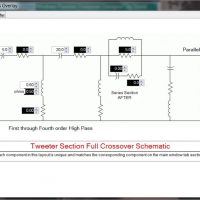
Project Parts List:
|
Part # |
Description |
Qty |
|
290-597 |
Eminence Kappalite 3015 Neo 15″ Speaker Driver |
1 |
|
294-605 |
B&C DE250-8 1″ Polyimide Horn Driver 8 Ohm 2/3-Bolt |
1 |
|
299-2303 |
B-52 PHRN-1014 1″ Horn 10″ x 14″ Bolt-On |
1 |
|
340-512 |
Wet Look Pint Black 16 oz. |
1 |
|
260-101 |
Acry-Tech DuraTex Black 1 Gallon Roller Grade Speaker Cabinet Coating |
1 |
|
257-328 |
Dayton Audio 2.0mH 14 AWG Perfect Layer Inductor Crossover Coil |
1 |


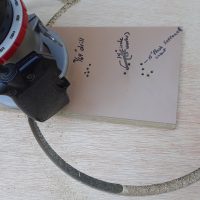
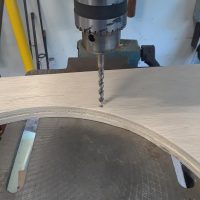
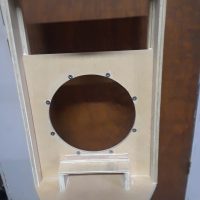
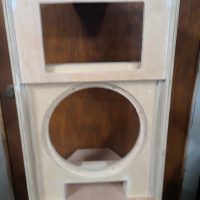
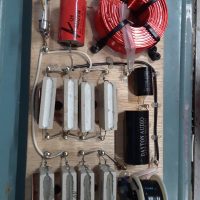
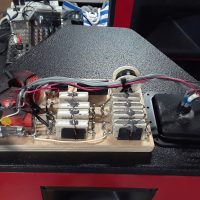
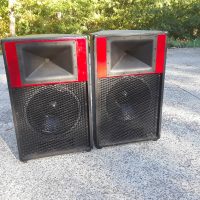
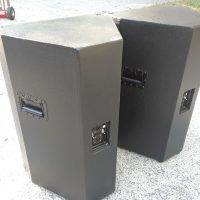
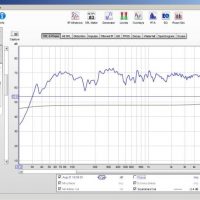
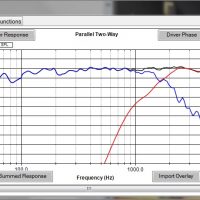
Hello.
I have looked for the .frd and .zma files for the drivers in this project in the places you suggested, but cannot find them.
Would you be able to send them to me directly if I give you my details or post a link to them? Many thanks, Andrew.
Hi,
You mention .frd and .zma files for the B&C driver were provided by PE. Can you tell me if they are published on their website or did the send them to you? Many thanks.
If memory serves, the .frd and .zma files for the woofer came directly from Eminence customer service, and the files for the compression driver came from PE customer service. They were both eager to help out!
Many thanks.